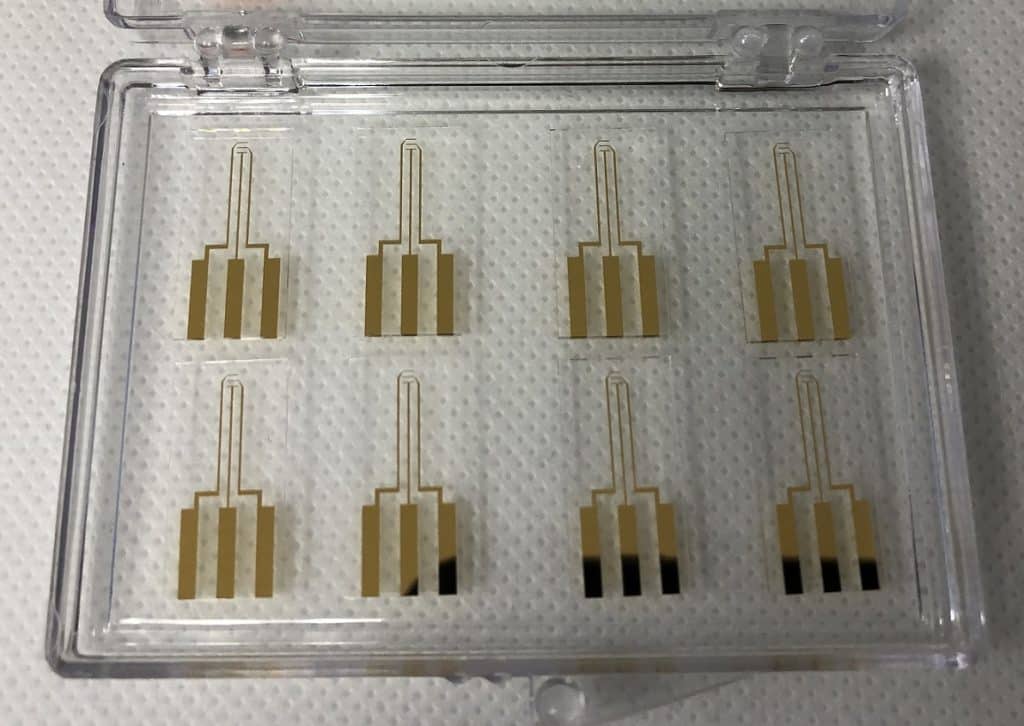Photolithography based Lift-off
Lift-off is often conducted following a series of photolithography steps that create a photoresist layer onto a substrate. Chemical and metal lift-off methods are used to create distinctive patterns onto a surface. Both types of lift-offs can be time consuming compared to wet etching, however lift-off is a safer method that offers lower production costs and enhanced processing capabilities.
Metal lift-off is used to create a pattern by depositing a metal film over a patterned photoresist. The photoresist is removed by a solvent to allow the metal in patterned regions to remain intact on the substrate. Common types of metal lift-off include double layer lift-off and image reversal.
Double Layer Lift-off
During double layer lift-off two different types of resists are deposited on top of each other. The top layer is often patterned while the bottom layer is undercut to provide a lift-off profile. The differing layers are selected based on their ability to prevent photoresist mixture. This method of lift-off involves a positive resist, where exposed regions are soluble and unexposed areas are protected, and a lift-off resist (LOR). LOR resists are insoluble in photoresist solvents and soluble in most photoresist developers. Additionally, LOR resists have a controllable dissolution rate that can be adjusted in order to create an ideal undercut for lift-off.
The advantage of double layer lift-off is that multiple layers can be deposited at once which creates simplified lift-off processing. Furthermore, double layer lift-off can be used in fabricating semiconductor devices that require dual layer structures.
Image Reversal
Image reversal (IR) in photolithography works by reversing the sloped profile of an exposed photoresist to create an ideal undercut for lift-off. Through a reversed tone photomask, a negative pattern is defined onto a substrate surface. IR entails additional steps, reversal bake and flood exposure, to create a resist image. During reversal baking, exposed resist becomes insoluble during development. Increased baking times and temperature results in a reduced development rate. The development rate affects the degree to which a photoresist is undercut. In flood exposure, the unexposed regions of photoresist become developable. The exposure levels are generally twice as high as the first initial exposure due to the absence of a photomask. To maintain a hydrated surface, rehydration is conducted through water which in turn helps to maintain a high development rate.
Chemical lift-off is a subtractive process and is often performed via batch immersion:
Batch Immersion
Batch immersion entails placing a photoresist patterned substrate into a chemical etchant. Etching rates are used to determine the amount of time in which a substrate is submerged and what temperature the etchant is heated to. It can be difficult to avoid unwanted metal pieces from redepositing onto a substrate surface. This can be avoided by suspending a substrate so that metal pieces fall downwards, away from the surface.
Chemical lift-off can cause unwanted residues and chemical contamination during processing. High temperatures are also often required to effectively remove unwanted metal regions. Dangerous chemicals such as acids are commonly used in batch immersion-based lift-off. This requires additional safety measures to be in place during processing.
Contact Platypus Technologies today to assist with custom projects involving chemical and metal lift-off!
